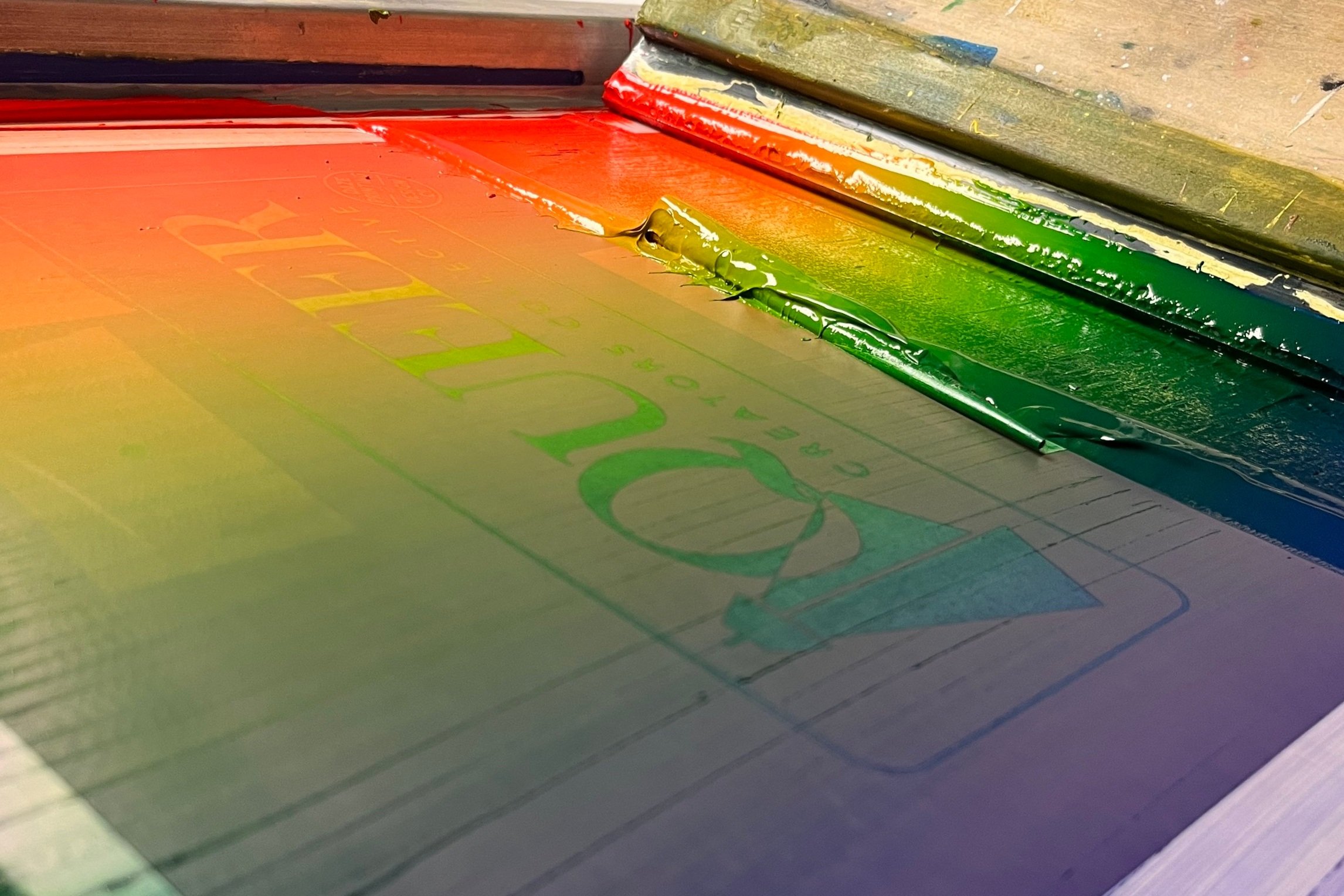Achieving perfection with micro registration in screen printing.
Screen printing is a popular technique used to create vibrant and durable designs on various surfaces. However, one common challenge in screen printing is achieving precise registration, where multiple colors or layers align perfectly. This is where micro registration comes into play. In our effort to help problem solve any issues that you might be having with your registration, we will explore the concept of micro registration in screen printing and how it can help you achieve perfection in their designs.
A fun rainbow print we did a while back at the shop.
The Importance of Micro Registration
Micro registration is the process of making fine adjustments to the position of screens and artwork in screen printing. It allows printers to align different layers or colors accurately, resulting in crisp and clean designs. Achieving perfect registration is essential, especially when printing intricate designs or using multiple colors. Without proper registration, the final print may appear blurred or misaligned, compromising the overall quality of the product.
Techniques for Micro Registration
There are several techniques that screen printers can employ to achieve micro registration. One common method is the use of micro-adjustable screen printing presses. These presses allow for precise adjustments of the screens, ensuring that each color or layer is in perfect alignment. Another technique is the use of registration marks. These marks are strategically placed on the screens and artwork, serving as reference points for aligning the different layers. By carefully aligning the registration marks, printers can achieve accurate registration.
Benefits of Micro Registration
The use of micro registration in screen printing offers numerous benefits to printers. Firstly, it allows for the creation of intricate and detailed designs with multiple colors. By accurately aligning the different layers, printers can bring their creative visions to life. Additionally, micro registration helps to minimize waste by reducing misprints. When layers are not aligned correctly, it often results in unusable prints. However, with micro registration, printers can significantly reduce the number of misprints, saving both time and resources.
Advanced Techniques for Micro Registration
While the basic techniques mentioned earlier are effective, there are also advanced techniques that can further enhance micro registration in screen printing. One such technique is the use of magnification tools, such as loupe eyepieces or microscopes. These tools allow printers to have a more detailed view of the registration marks, making it easier to achieve precise alignment. Another advanced technique is the use of computerized registration systems. These systems utilize software and sensors to automatically adjust the position of screens, ensuring accurate registration without the need for manual adjustments.
Overcoming Challenges in Micro Registration
Although micro registration is a valuable technique, it does come with its own set of challenges. One common challenge is the stretching or distortion of screens over time. To overcome this, it is important to regularly check and replace screens that have become worn or damaged. Additionally, thorough cleaning of screens and artwork is crucial to prevent any debris or ink buildup that may affect the accuracy of registration. By addressing these challenges, printers can maintain consistent and precise micro registration.
Conclusion
Micro registration is a crucial technique in screen printing that allows printers to achieve perfection in their designs. By making fine adjustments to the position of screens and artwork, printers can ensure accurate registration of multiple layers or colors. This results in high-quality prints with crisp and clean designs. Whether you are a professional screen printer or a hobbyist, mastering the art of micro registration will undoubtedly elevate your screen printing game to the next level. With the use of advanced techniques and by overcoming challenges, you can achieve even greater precision and bring your creative visions to life. We hope that this guide can help you dial in your printing abilities and help you get to the next level of accurate printing.

